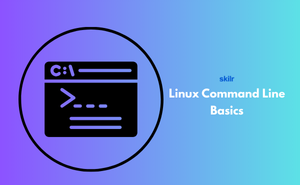👇 CELEBRATE CLOUD SECURITY DAY 👇
00
HOURS
00
MINUTES
00
SECONDS

This exam is designed to help you build a strong foundation in using the Linux command line. You’ll start with the basics like understanding what terminals and shells are, then move on to navigating the file system, managing files and processes, setting permissions, and even installing software using package managers on both Debian and Red Hat-based systems.
You will also get hands-on with popular text editors like vi, vim, and nano, and learn how to tweak your environment to suit your workflow. By the end, you'll feel confident working with Linux from the command line and be better prepared for real-world tasks.
Who should take the exam?
1. Intro to the Linux Command Line
2. Core Shell Commands
3. Advanced Techniques
4. Shell Environment & System Settings
5. Software Installation on Linux
6. Text Editors
Industry-endorsed certificates to strengthen your career profile.
Start learning immediately with digital materials, no delays.
Practice until you’re fully confident, at no additional charge.
Study anytime, anywhere, on laptop, tablet, or smartphone.
Courses and practice exams developed by qualified professionals.
Support available round the clock whenever you need help.
Easy-to-follow content with practice exams and assessments.
Join a global community of professionals advancing their skills.
Gaining Linux command-line skills opens up several high-demand job opportunities, including:
No prior experience is required. However, basic familiarity with computers and operating systems will be helpful. This course is beginner-friendly and designed for IT professionals looking to expand their knowledge.
Salaries vary based on experience, location, and industry, but here are general estimates:
To enhance your Linux skills, you can:
This course is self-paced, and completion time depends on your learning speed and experience level:
By completing this course, you will:
Linux command-line skills are highly valuable in industries that rely on servers, cloud computing, and cybersecurity, including:
To complete this course, you will need:
Yes! Linux is one of the most in-demand skills for IT professionals. To improve your job prospects:
This course provides a comprehensive guide to mastering the Linux command line, covering terminal navigation, file management, process control, software installation, and security configurations. You will learn essential Linux system administration skills through hands-on exercises and real-world examples.